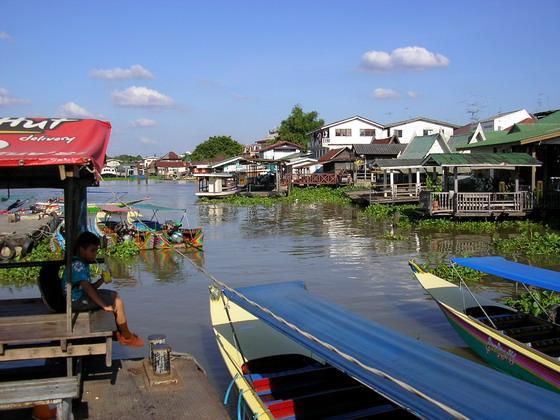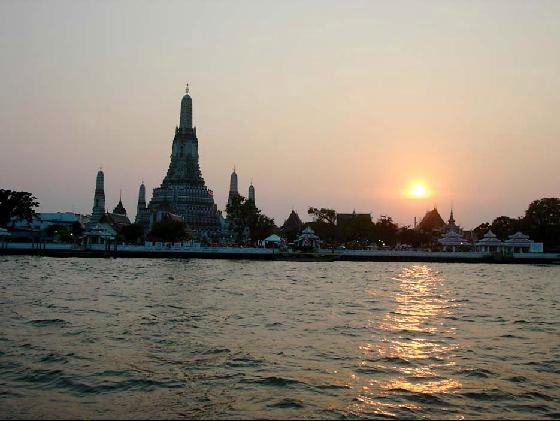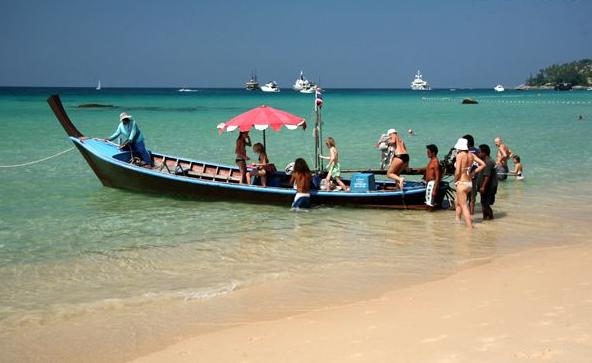Thailand - About
|
|---|
The kingdom of Thailand lies in the heart of Southeast Asia, making it a natural gateway to Indochina, Myanmar and Southern China. Its shape and geography divide into four natural regions : the mountains and forests of the North; the vast rice fields of the Central Plains; the semi-arid farm lands of the Northeast plateau; and the tropical islands and long coastline of the peninsula South.
The country comprises 76 provinces that are further divided into districts, sub-districts and villages. Bangkok (population 9 million) is the capital city and centre of political, commercial, industrial and cultural activities. It is also the seat of Thailand's revered Royal Family, with His Majesty the King recognised as Head of State, Head of the Armed Forces, Upholder of the Buddhist religion and Upholder of all religions.The country's official name was Siam until 24 June 1939. It was again called Siam between 1945 and May 11 , 1949, when it was again changed by official proclamation. The word Thai means "freedom" in the Thai language and is also the name of the majority ethnic group.
Approximately seventy-five percent of Thais in Thailand are ethnically Thai. The rest are divided between ethnic Chinese, Hill tribes in the North and Malay in the South. There are some Laotians in the Northeast as well. The Chinese are the largest minority. Many have been in Thailand for three generations. The older members of the families still speak Chinese. There are Chinese temples, restaurants and many, many businesses run by Chinese families.
Thailand was a representative democratic constitutional monarchy until the sudden coup on September 19, 2006. The King is well respected and in some segments of society revered and it is a crime to insult any of the Royal Family.
The Thai King recently celebrated 60 years on the throne and millions of Thai citizens commemorated the event and showed their reverence by donning yellow t-shirts and/or by wearing yellow wrist bands - the official royal color.
The government is now a military junta headed by Sonthi Boonyaratglin ( RTGS : Sonthi Bunyaratkalin). On 1 October 2006, the junta named Surayud Chulanont ( RTGS : Surayut Chulanon) as the prime minister of the interim government.

Physical
Thailand is located in Southeastern Asia, southeast of Burma , bordering the Andaman Sea , and the Gulf of Thailand. The climate there is tropical with a warm southwest monsoon from May to September and a cool northeast monsoon from November to March.
The terrain includes a central plain, the Khorat plateau in the east, and mountains in other regions. Some natural resources include tin, rubber, natural gas, tungsten, tantalum, timber, lead, fish, lignite, fluoride, gypsum and arable land.
People
More than 64.6 million people live in Thailand. Thai is their primary language, while English is considered the secondary language of the elite.
Other ethnic and regional dialects are also used. Thailand is primarily Thai (75%) with some Chinese (14%) and various other ethnic groups (11%). Religions practiced in Thailand are: Buddhism (95%), Islam (5%), with Christianity, Hinduism, and other beliefs practiced by a little less than 1% of the population.

Economy
Thailand currently has a solid infrastructure, free-enterprise economy, and pro-investment policies. Boosted by increased consumption and strong export growth, the Thai economy grew 6.9% in 2003 and 6.1% in 2004.
Preferential trade agreements with various partners have increased exports and helped to maintain high growth. In late December 2004, a major tsunami struck Thailand and growth slowed to 4.4% in 2005. (This downturn was also aided by high oil prices, weaker demand from Western markets, severe drought in rural regions, tsunami-related declines in tourism, and lower consumer confidence. The government's plans for infrastructure and social development have also slowed growth.) In 2006, the economy may be at risk for a possible avian flu epidemic.
Areas of Concern
Air and water pollution, deforestation, soil erosion, and illegal hunting of wildlife are the nation's primary environmental concerns.
Geography
Area: 514,000 sq km
Capital: Bangkok (8,539,000)
Environmental concerns: air and water pollution; deforestation; soil erosion; wildlife populations threatened by illegal hunting
Geographical features: central plain and the Khorat Plateau in the east with mountains elsewhere
Climate: tropical, rainy, warm, cloudy southwest monsoon (mid-May to September) with dry, cool northeast monsoon (November to mid-March) however, the southern isthmus is always hot and humid
People
64 million estimates for this country.
Major languages are Thai, English (secondary language of the elite), ethnic and regional dialects
Religions: Buddhist (95%), Muslim (5%), Christian and other (less than 1%) (2000 census)
Compulsory education (Ages): 6-15.
Communication and transportation
6.797 million (2004) main telephone lines in use
8.42 million (2005) Internet users
57,403 km of roadways
4,071 km railroads
108 (2005) airports
5.65 million motor vehicles (2004)
Economy
Currency: baht
Labor force: agriculture (49%), industry (14%) services (37%) (2000 est.)
Resources and industry
Natural resources: tin, rubber, natural gas, tungsten, tantalum, timber, lead, fish, gypsum, lignite, fluorite, arable land.Agriculture: rice, cassava (tapioca), rubber, corn, sugarcane, coconuts, soybeans
Industry: tourism, textiles and garments, agricultural processing, beverages, tobacco, cement, light manufacturing such as jewelry and electric appliances, computers and parts, integrated circuits, furniture, plastics, automobiles and automotive parts; world's second-largest tungsten producer and third-largest tin producer

